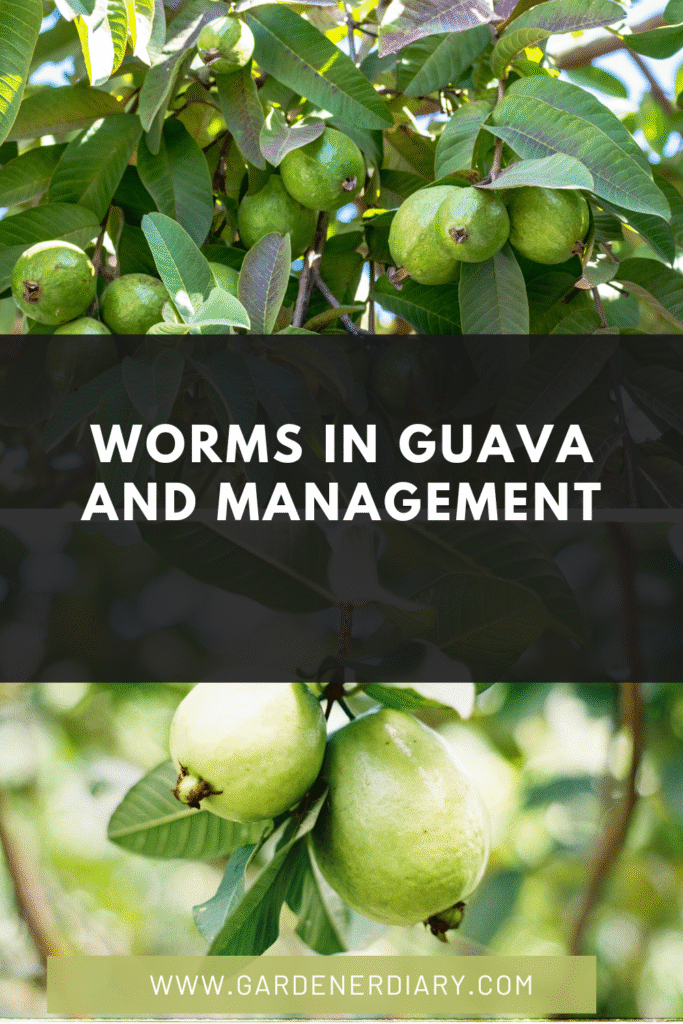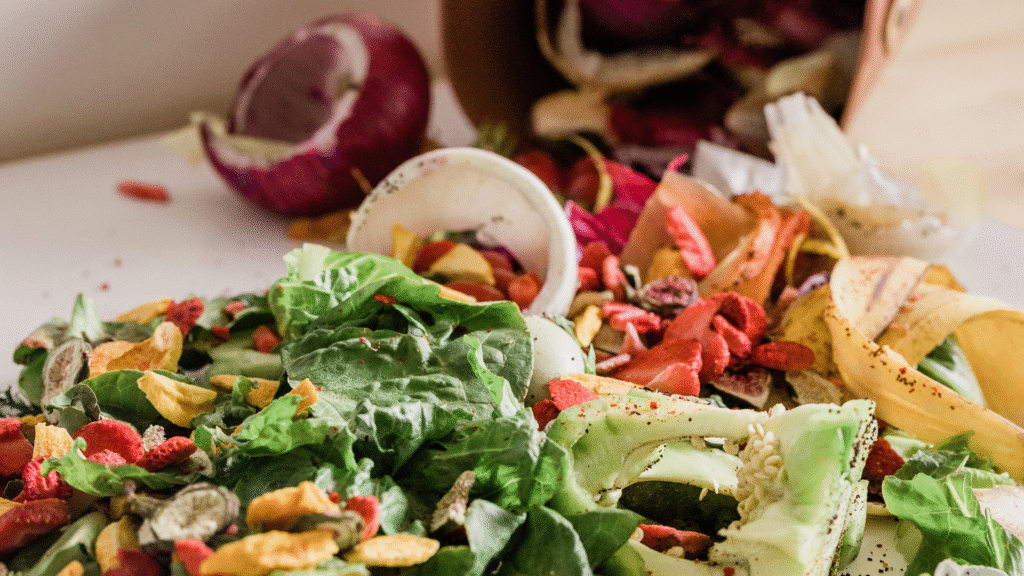In this article, we are going to be looking at the worms in guava plus their control and management.
Overview
Guava (Psidium guajava) is one of the widely cultivated species of guava in tropical Americas. And presently guava is grown in different countries of the world.
In the united states, guava is one of the four main fruit crops with about 16,124 cultivated hectares. It has an annual production unit of around 239,713 tones plus a 46.39 internal return rate.
The guava tree is usually grown in an orchard or small farming area that is not more than two hectares.
The growing area of guava is usually a scattered silvopastoral system with an altitude of up to 1900 meters from the sea level.
Guava remains one of the inexpensive sources of dietary vitamin C and folate. However, damage due to attack or infestation by worms and other pests was shown to affect guava production significantly every year.
There are many types of insects and worms that cause a major loss on guava plantation.
For instance, in Colombia, guava production is reported to be seriously affected by insect pests such as fruit flies (Anasyropha striata, Anastrepha fraterculus, and Conotrachelus psidii).
The common worms of guava are nematodes and insect maggots. However, there is also another worm called stem borer that was recently identified by big farmers of guava in 2006.
According to Pulido, worm borer is one of the most important guava pests that cause serious effects to guava cultivation when the worms become so established.
The larva of worm borer can pierce the stem of guava tree and feed on the excreta that accumulate at the base of the stem using a fiber operculum.
This causes damage to guava stem and subsequently the death of guava plants with the loss of productivity of the agricultural unit.
Guava is also damaged by worms-like insect pests called maggots. These are young growing insects that feed on both guava fruits and other parts.
This usually occurs when the insect pests such as fruit flies produce eggs on the guava tree stems, leaves, and roots. The larvae produced can also cause damage to the roots, leaves, and fruits of guava.
However, the maggots are ones that cause the most serious damage. Both worms and maggots have similar biological habits in which they suck juicy flesh from guava fruits.
The maggots and worms that are borne on the guava fruits usually Pierce the guava fruit skin and slowly start feeding on the rich juicy pulp of the fully ripe guava, which later turns the surface of the guava fruit skin into a rust-like color.
This rusty color can be seen as a tiny spots on the guava fruits.
Management of Worms In Guava
The followings are steps you need to take to control and prevent your guava from worms:
- Use of resistant guava varieties
- Employing good agricultural practices such as timely pruning and fertilizer application
- Use of fumigants
- Use of good nematocides
- Use of good insecticides
- Harvest guava fruits before they are fully ripe
- Burn fruits or guava trees that are seriously damaged by worms
- Pay close attention to any changes on guava leaves, stems, and fruit. If you notice any abnormal changes such as rusty spots, remove the fruits or leaves and spray insecticides, fumigants, and nematocides
What Happen if you Eat Guava with Worms?
When guava is seriously affected by worms or insect maggots, an you happen to eat the guava unknowingly, according to most medical experts, there is not going to be any problem.
It will only add up to the protein that is already in the guava. However, there can be risk of allergy due to bad sensation and sometimes the guava fruit can be contaminated by bacteria and fungi following injuries caused by the worms and maggots.
If you have taken the guava, you do not need to worry but if you are about to eat the the damaged guava, do not take. Consider removing the guava worms or find another healthy guava to quench your thirsty.
Are Guava Worms Harmful?
Guava Worms may not be harmful but it is recommended that you should not take guava with worms.
How do I protect my Guava from Worms?
You can protect your guava by spraying insecticides and fumigants. You can prune your guava timely to allow fresh air to be going in and out. This can also helps protect your guava.
Is it OK to Eat Fruits with Worms?
If you feel like you can eat the guava, and the guava is not rotten or smelling bad, you may consider giving it a try. But, it is advisable to avoid part that is damaged by the guava worms.

Conclusion
Worms in guava can be damaging to guava proper growth and yield if not control effectively.
In this guide, we looked at the management of guava worms plus your frequently asked questions about guava worms. We would like to hear more of your questions and views. So, do write to us in the comment section below.
Related:
If you’re interested in maximizing the benefits of guava, you might want to start by learning the health benefits of guava to understand why this fruit and its leaves are so popular in natural remedies. Once you’re familiar with its advantages, discover how to make guava leaf oil for hair and skin care, or explore how to use guava leaves for skin whitening and flat tummy treatments. For gardening enthusiasts, you can also learn how to grow a guava tree from cuttings and improve your plant’s health by choosing the right pineapple guava fertilizer.
References
Morales P., Noguera Y., Escalona E., Fonseca O., Rosales C., Salas B., Ramos F., Sandoval E., Cabañas W. Sobrevivencia larval de Spodoptera frugiperda Smith con dietas artificiales bajo condiciones de laboratorio. Agron. Trop. (Maracay) 2010;60(40):375–380. https://scholar.google.com/scholar_lookup?journal=Agron.+Trop.+(Maracay)&title=Sobrevivencia+larval+de+Spodoptera+frugiperda+Smith+con+dietas+artificiales+bajo+condiciones+de+laboratorio&author=P.+Morales&author=Y.+Noguera&author=E.+Escalona&author=O.+Fonseca&author=C.+Rosales&volume=60&issue=40&publication_year=2010&pages=375-380&
Carrillo H., Ocampo L. Corpoica; 2011. Mejores clones y variedades promisorias de guayaba (Psidium guajava L.) identificados en fase de establecimiento del cultivo. Colombia. 24 p. https://scholar.google.com/scholar?q=Carrillo+H.+Ocampo+L.+Mejores+clones+y+variedades+promisorias+de+guayaba+(+Psidium+guajava++L.)+identificados+en+fase+de+establecimiento+del+cultivo.+Colombia+2011+Corpoica+24+p+
Leiva L.C. ICA; Bogotá, Colombia: 2012. Manejo fitosanitario del cultivo de la guayaba (Psidium guajava L.): medidas para la temporada invernal. https://scholar.google.com/scholar?q=Leiva+L.C.+Manejo+fitosanitario+del+cultivo+de+la+guayaba+(+Psidium+guajava++L.):+medidas+para+la+temporada+invernal+2012+ICA+Bogot%C3%A1,+Colombia+
Pulido V.C. Corporación Colombiana de Investigación Agropecuaria; AGROSAVIA. C.I. Tibaitatá, sede Cimpa, Barbosa, Colombia: 2013. Informe técnico final. Biología y hábitos de los gusanos barrenador, enrollador y anillador del tallo en árboles de guayaba e incidencia, daños y estrategias de manejo integrado del picudo en el norte del valle. https://scholar.google.com/scholar?q=Pulido+V.C.+Informe+t%C3%A9cnico+final.+Biolog%C3%ADa+y+h%C3%A1bitos+de+los+gusanos+barrenador,+enrollador+y+anillador+del+tallo+en+%C3%A1rboles+de+guayaba+e+incidencia,+da%C3%B1os+y+estrategias+de+manejo+integrado+del+picudo+en+el+norte+del+valle+2013+Corporaci%C3%B3n+Colombiana+de+Investigaci%C3%B3n+Agropecuaria+AGROSAVIA.+C.I.+Tibaitat%C3%A1,+sede+Cimpa,+Barbosa,+Colombia+

